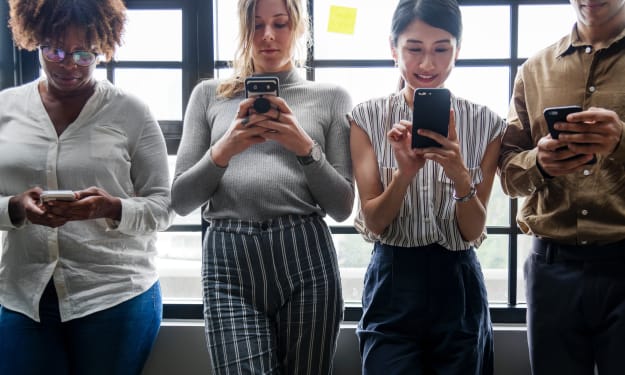
Technology like the printing press, the internet, and social media have not revolutionized media, or its mediums. The technology only makes media’s distribution, and storage easier, and more efficient without changing the inherent nature of the media. A book read on a Kindle has the same content, and context as that same book read on paper, because the historical trends of media have remained unchanged for thousands of years.
Roger Chartier argues that the medium of media is relevant to the message of the media. His writings remind me of my grandmother telling me how holding a book in your hand increases your ability to learn from it, but I always disagreed with that line of logic. It seems to me the most important elements of media are the content, and the context, while the medium is irrelevant.
For example, a traditional library occupies a physical space, and houses physical copies of media like magazines, records, scrolls, essays, and books for people to come to study or read. A digital library occupies a physical space, and houses physical copies of media like magazines, records, scrolls, essays, and books for people to go online to study or read. The digitization of the information did not dilute the content of the media contained in a library.
I think that Chartier’s real concern is that the digitization of media will make it lose its context, because it loses the physical structure. For a normal book, if I wanted to read it, I would have to physically hold it in my hand, and would be forced to feel and see its history. I would be able to smell its pages, see the stains and weathering, or feel the crinkling pages. I don’t get any of that context for a digital book; all I get is the content.
From that line of thinking, I can see why the medium contributes to the message, but I still think you can add to the new medium to convey the same information. For example, I am able to buy clothing, and accessories online that fit me perfectly, even though I never physically touch, or see the items until they arrive. I can do this, because the digital medium provides me the context through new information like user reviews, relative size pictures, and sizing charts. For digitized media, part of the new medium should include contextual information like the date and location the media was created, to preserve that context, and keep the entire message intact.
Technology helps to make things more efficient, and easier for people, but it rarely changes the actual behavior, or outcomes of human society. News and media have a long-running history of sensationalism for the gain of the ruling class, and the creators of media. The ruling class often used media to control, and inform the masses in a direction that best benefited the ruling class.
Before the written word, the ruling class used paintings, sculptures, murals, and monuments to tell stories. The images, and oral traditions drove the narrative of the culture’s history to the same effect that social media, and news stories do today. With the advent of the written word, the masses were kept largely illiterate, which meant they still needed a higher power to instruct them of their own history and culture.
The printing press made it easier, and more efficient to create and distribute written pamphlets and books to the masses, but they were still largely illiterate, and uneducated. For example, before the printing press, people would line up, and wait to hear the word of God from the priest of the church. All the bibles and texts were written in Latin, that the masses couldn’t read, and were kept tucked away inside buildings that the masses weren’t allowed to enter.
After the printing press, Martin Luther’s writings, and versions of the Bible began to spread across the continent of Europe. People translated the bibles into more languages, and people began reading the word of God for themselves. However, because of poor translations, and the continued low intelligence level of the average person, they still needed assistance and guidance understanding the words they now had access to. This means that the relationship of a powerful figurehead instructing the masses of their culture didn’t change; it simply looked a little different.
Instead of the priest telling the masses exactly what the Bible said on the page, the priest now interpreted the words on the page.
In modern day, the average person is more intelligent, and has access to a multitude of resources, using the internet, to read and interpret the media they consume. However, the internet also made the creation of media and news more efficient.
When a news story came out fifty years ago you would listen to a few stories on the radio, and see the big stories on television on a few of the channels. With the internet, any minor story, for almost any small niche community could have hundreds of news sites delivering the story from a host of perspectives with an overwhelming amount of information.
The sheer amount of content for a person to digest, and analyze, creates a similar overwhelming feeling to the European shopkeeper trying to read a bible for the first time in her life. To compensate for the volume of information at their disposal, the average modern person will go to one central news source to be instructed about their own history. The technology made the processes of media more efficient, but it did not change the inherent nature of the content and how it is delivered.
Before, the masses could only view a handful of news sources, because that's all that was available to them. Those news sources decided what the masses got to know. Now, the masses choose to only view a handful of news sources, because they can't process the large volume of information in the world. Those news sources still decide what the masses get to know.
About the Creator
Rivahn P
Entrepreneur. Author. Autistic. I am blessed with a brain that excels at analysis which means I'm really good at evaluating businesses, compiling researched information, and figuring out the plot of almost any movie from the trailer.






Comments
There are no comments for this story
Be the first to respond and start the conversation.